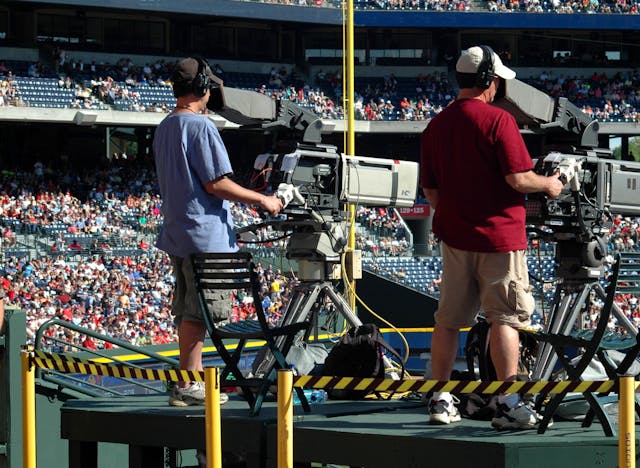The Role of Diversity in TV: How Representation is Changing Television Shows
In recent years, the entertainment industry, particularly television, has seen a dramatic shift towards greater diversity and inclusion. From casting choices to storylines, television shows are increasingly reflecting the rich variety of cultures, experiences, and identities found in the real world. The role of diversity in TV is no longer just a trend—it has become a crucial aspect of modern storytelling, reshaping how we view entertainment and how audiences relate to the characters and narratives they watch.
In this article, we’ll explore how diversity in TV is changing the landscape of television, the impact it has on both the industry and audiences, and why it’s more important than ever to have diverse voices behind and in front of the camera.

Why Representation Matters
Representation in media is essential because it shapes how people see themselves and others. For many years, television was dominated by a narrow depiction of the world, often focusing on white, heterosexual, and able-bodied characters while marginalizing people of color, LGBTQ+ individuals, people with disabilities, and other underrepresented groups.
When shows are inclusive, they help to normalize diversity, providing a platform for stories that resonate with a wider audience. Representation allows people to see themselves in complex, positive roles, something that has long been denied to many minority groups. It not only offers validation but also promotes empathy and understanding among viewers who might not share the same background or experience.
Key Impact of Representation:
- Increased Visibility: Diverse representation helps elevate voices that have been underrepresented or misrepresented in the past.
- Normalizing Diversity: By seeing different cultures, races, genders, and sexual orientations portrayed authentically, viewers can better understand and appreciate the richness of the human experience.
- Challenging Stereotypes: Representation allows for more nuanced and varied depictions of individuals from diverse backgrounds, breaking away from harmful stereotypes.
The Rise of Diverse Storylines
Diversity in TV isn't just about casting; it's about telling stories that encompass a wide range of perspectives. As more diverse writers, directors, and producers are given a platform, the stories that emerge are more reflective of real-life experiences. This shift is empowering marginalized communities to tell their own stories, contributing to a more inclusive and authentic narrative landscape.
For example, in recent years, we’ve seen television shows explore themes related to racial identity, gender fluidity, mental health, and immigrant experiences. These stories allow viewers from diverse backgrounds to find characters they can relate to, but also challenge those from different walks of life to step into the shoes of someone with a different perspective.
Examples of Diverse Storylines:
- Pose (FX): Set in the 1980s and 1990s New York City, Pose showcases the world of ball culture and explores the lives of trans women and LGBTQ+ people of color. The show highlights the intersection of race, gender identity, and sexuality, and tells stories that were previously left untold on mainstream TV.
- Master of None (Netflix): Created by Aziz Ansari, Master of None touches on themes of race, relationships, and career choices, focusing on the experience of Indian-American characters in a predominantly white society.
- One Day at a Time (Netflix): This reimagining of the classic sitcom brings the experiences of a Cuban-American family to the forefront, dealing with issues like immigration, mental health, and family dynamics in a way that resonates with many.
By broadening the scope of the stories being told, TV is opening up space for important cultural conversations and offering new ways for audiences to connect with the media they consume.
The Importance of Diverse Writers and Creators
Behind the scenes, diversity plays a key role in how television shows are developed and written. Having diverse writers, directors, and producers is critical to ensuring that stories are told in an authentic and meaningful way. It's not enough to simply cast a diverse group of actors—storytelling itself must reflect the nuances and complexities of different cultures, identities, and lived experiences.
In recent years, we've seen an increase in the number of writers and showrunners from diverse backgrounds, which has led to richer, more accurate portrayals of different communities. These creators are breaking new ground by telling stories that are not only representative of their backgrounds but also appeal to a wide audience.
Notable Diverse Creators and Writers:
- Shonda Rhimes: Known for creating groundbreaking shows like Grey’s Anatomy and Scandal, Rhimes has used her platform to create diverse, complex characters in positions of power, which has been a game-changer for representation of Black women on television.
- Lena Waithe: As the creator of The Chi and a writer for Master of None, Waithe has brought the stories of Black LGBTQ+ individuals into the mainstream, helping to diversify TV narratives in a meaningful way.
- Ava DuVernay: Known for her work on 13th and When They See Us, DuVernay has used her storytelling to highlight racial injustice, with a focus on Black experiences in America. Her work continues to inspire conversations about race and representation.
By diversifying the creative teams behind television shows, the industry ensures that the content being produced resonates authentically with a wider range of audiences.
Impact on Viewership and Audience Engagement
As TV shows become more diverse, they not only capture the attention of marginalized groups but also draw in mainstream audiences who are eager for fresh, relevant content. Diverse representation appeals to people who have often felt unseen, as well as those who are curious about the experiences of others.
Audiences have become increasingly vocal about the need for more inclusive content. The rise of social media and online platforms has provided fans with a space to demand better representation and hold shows accountable for their portrayals of marginalized groups. As a result, networks and streaming services have had to pay attention to the growing demand for diverse content.
- Global Appeal: Shows with diverse storylines often have international appeal, as they tap into universal themes of identity, belonging, and the human experience.
- Positive Reception: Diverse shows tend to receive praise from both critics and viewers for their originality and authenticity, which in turn boosts their popularity and viewership.
- Cultural Relevance: As society becomes more diverse, TV shows that embrace inclusivity are better positioned to stay culturally relevant, appealing to younger generations that prioritize diversity and social justice.
Challenges Still to Overcome
While there has been progress in terms of diversity in TV, there are still challenges to overcome. Tokenism, for example, continues to be a problem. Simply adding a diverse character to a predominantly white cast isn’t enough if the character isn’t given depth, a storyline, or agency.
Moreover, while there are more LGBTQ+ characters and characters of color in leading roles, there is still a significant lack of representation for other marginalized groups, including people with disabilities, indigenous communities, and people from lower socioeconomic backgrounds. Ensuring that these groups are accurately and respectfully represented is still a work in progress.

The Future of Diversity in TV
The future of TV is one where diverse representation continues to grow—not as a trend, but as an essential aspect of the storytelling process. As the world becomes increasingly globalized and interconnected, TV must reflect the many identities, cultures, and experiences that shape society. With the continued push for diversity, more creators from underrepresented groups will have the opportunity to share their stories, and audiences will have more access to content that resonates with their lived experiences.
The demand for diverse and inclusive TV shows is not a passing phase; it's part of an ongoing evolution in the entertainment industry. As the conversation around representation continues to evolve, TV will remain an important tool for challenging stereotypes, sparking dialogue, and fostering empathy across different communities.
Conclusion
The role of diversity in TV is changing the entertainment landscape in profound ways. Through increased representation, inclusive storylines, and the amplification of diverse voices behind the camera, television has become a platform that more authentically reflects the world we live in. While there is still work to be done, the strides made in recent years demonstrate the importance of telling stories that resonate with a broad and varied audience. As the industry moves forward, the diversity of voices, characters, and stories on TV will continue to redefine what it means to watch, enjoy, and engage with entertainment.












